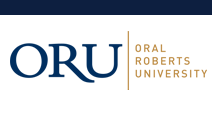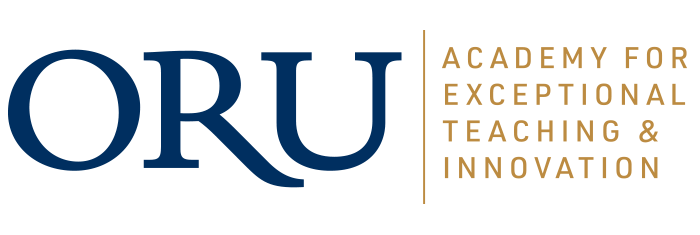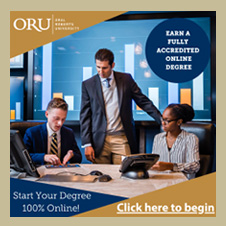-

Improving My Course in Brightspace D2L
04. 5.23
Jason Howell and Jana SwartwoodProf. Jason Howell, Director of the Institute of Design, Experience and Art, and professor of graphic design, shares best practices for using Brightspace by D2L. He begins with his approach to continuous improvement at the course level, how faculty and students may make use of various features, how faculty can manage their course shells, and ends with a wish-list for system improvement. Prof. Howell takes questions from the audience to round out his presentation.
Jana Swartwood, Executive Director for Online & Lifelong Learning continues the presentation by offering ways that faculty may improve their use of Brightspace: (1) Copying components, (2) Adding TA’s, (3) Using the Class Progress dashboard, and (4) using the Quick Eval tool. The session ends with an overview of ORU’s Brightspace support staff contacts.
-

ChatGPT & The Impact of Artificial Intelligence on Higher Education
03. 1.23
Andrew LangDr. Andy Lang, Chair of the Department of Computing and Mathematics, discusses the history of artificial intelligence and places where language processing already exists in everyday living. He continues with a review of ChatGPT, BING chat, Elicit and Google’s BARD. The presentation then turns to AI in the classroom followed by an open discussion on the implications for teaching and learning at ORU.
Resource 1: Lang, A. (2023, May). The Impact of AI on Christian Higher Education: A Call to Lead. Department of Computing & Mathematics, Oral Roberts University.
Resource 2: Lang, A. (2023) "Editorial: The Impact of AI on Christian Higher Education: A Call to Lead," Journal of the Scholarship of Teaching and Learning for Christians in Higher Education. 13 (1) https://doi.org/10.31380/1559-8624.1105
-

Self-Care, Managing Stress and Faculty Promotion
01.23.23
William Buker and Kim BoydDr. Buker, Associate Dean and Senior Professor of Counseling, opens the presentation on the topic of self-care – managing stress and anxiety. He discusses common stress-related symptoms, levels of stress, common causes of stress, variables for managing stress, and self-care principles. Dr. Buker encourages listeners to shoot “PAR”, by managing one’s Perspective, Attitude and Response. Dr. Buker then reviews several practical self-care ideas in the following areas: the physical body, thoughts and perspective, emotions, social relationships, and spiritual resources. He then discusses the role cultures play in determining success and significance, encouraging a grace-based relationship orientation over an image-based performance orientation. Dr. Buker finishes by reminding us to learn of Jesus, whose yoke is easy and His burden is light. Dr. Kim Boyd continues the presentation with an outline of the faculty promotion process.
-

ORU Faculty Ethos & History - Spirit-Empowered Life - Faith & Learning
11.21.22
Bill Buker, Daniel D. Isgrigg, and Wiliam RanahanNew faculty are introduced to being Spirit-Empowered. What does Spirit-Empowered mean, and why is it important, as a University, faculty member, and educator? Dr. Ranahan (Chair of Biology and Chemistry Dept.) begins with modeling how he integrates faith into a short lecture on sound, light, and neural paths. Dr. Isgrigg (Director of the Holy Spirit Research Center) lectures on how ORU as an institution has progressed since its inception through church history as a Spirit-Empowered university. Dr. Buker (Chair of the Seminary) lectures about how we as disciples of Jesus Christ can abide in Him and experience His fruitfulness in and through our lives.
Resource 1: Wilson, William M. (2018) "Oral Roberts and the Spiritual DNA of Oral Roberts University," Spiritus: ORU Journal of Theology: Vol. 3: No. 2, Article 11.
Resource 2: Isgrigg, D. D. (2018). Oral Roberts: A Man of the Spirit. Spiritus: ORU Journal of Theology, 3(2), 14.
-

Integrating Leadership Strategies in Your Curriculum
11. 2.22
Kim Boyd and Jay GaryDr. Boyd welcomes and introduces the session. Dr. Gary discusses how students develop their leadership identity by developing various competencies. ORU focuses on developing the competencies, or University outcomes, of spiritual integrity, personal resilience, intellectual pursuit, global engagement, and bold vision to help develop whole leaders for the whole world. Dr. Gary continues to share how faculty may implicitly and explicitly integrate a variety of leadership resources through instructional strategies and in the curriculum. Dr. Boyd concludes by reviewing the leadership components within the ORU teaching excellence framework domains.
Resource 1: ORU University Outcomes
Resource 2: ORU Teaching Excellence Framework Leadership Examples
-

Developing Rubrics Using the New ORU Outcomes
10. 5.22
Kim Boyd, Trevor Ellis, LeighAnne Locke, Terry Shannon, and Rachael ValentzThe development and examples of key program assessments (KPAs) are shared. Dr. Boyd opens the presentation. Dr. Shannon (B.S. Sports Management) begins by providing an overview of aligning program and ORU outcomes. Prof. Locke (B.S. Mathematics) walks through how current assignments were chosen to be used as key program assessments and then how the rubrics were revised to improve alignment. Dr. Valentz (B.S. Nursing) discusses how to improve the foundational alignment between program outcomes and the criterion (rubric row headings) used to measure them. She shares how criterion can be contextualized in different assignments and demonstrates in Brightspace, by D2L, how rubric lines can be tagged with one or more outcomes (ORU, general education, program, professional standards). Mr. Ellis provides an overview of building a key program assessment followed by a panel question and answers. Dr. Boyd closes the presentation with final remarks.
Resource 1: ORU University Outcomes
Resource 2: Key Program Assessment Template
Printing is not supported at the primary Gallery Thumbnail page. Please first navigate to a specific Image before printing.





